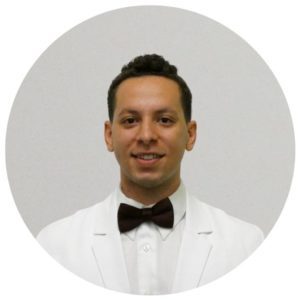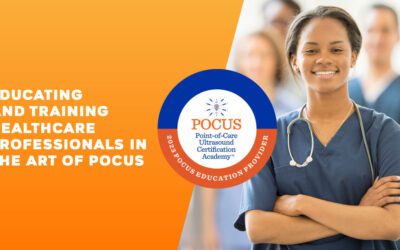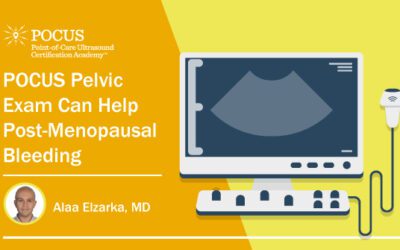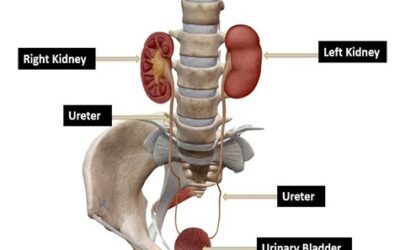By Beshoi Nashed
Chronic pain is a complex issue that has become a major societal problem over the past several years. Pain can either be present due to disease or injury or can simply be a condition in itself rather than an accompanying symptom.
Young adults often complain of intractable, chronic, or intense back pain. They usually seek treatment either from a medical professional via surgical interventions, opioid therapy, steroid injections, or by trying various homeopathic remedies. Different pharmacotherapies normally manage chronic pain in the wake of depleting the moderate modalities, as seen with the misuse of over-the-counter medications and nonsteroidal anti-inflammatory drugs (NSAIDs).
MRI is often the gold standard in diagnosing patients with low back pain; however, the high costs and limited availability in underserved communities and countries have diminished access to such modalities. These conditions leave clinicians having to turn to other modalities such as ultrasound. Ultrasound is a viable assessment and diagnosis option when seeking to determine the source of the pain. It is also a less expensive and more accessible alternative.
A cross-sectional study by Sutherlin et al. conducted in 2018 delved more into assessing the validity of lumbar multifidus (LM) and transversus abdominis (TrA) ultrasound measures while comparing the changes in muscle thickness in different positions between individuals reporting or not reporting a history of low back pain. Participants were split into two groups:
- Group 1: History of low back pain
- Group 2: No history of lower back pain
Participants were tested in 4 positions:
- Tabletops
- Seated
- Standing
- Walking
The results concluded that participants with a history of low back pain, have altered neuromuscular properties of the transversus abdominis, which presented on the ultrasound as decreased thickness modulations (P=0.3). On the contrary, no differences were observed for the thickness modulation of the lumbar multifidus between the two groups (P>0.05). In summary, this study suggests that a decreased transversus abdominis thickness modulation in the seated and tabletop positions is strongly correlated with a history of low back pain.
Additionally, this study is one of many that provides an example of how to bypass the high costs associated with healthcare.
Implementing treatments is another application of ultrasound in low back pain cases, which takes on various forms. Trigger point injection therapy is an effective method of treating chronic low back pain and is offered to patients with tender trigger points. The procedure consists of administering a total dorsal ramus block for the entire lumbar dorsal ramus (including the medial intermediate and lateral branches), which has been shown to reduce pain significantly compared with just a trigger point block (Kimura et al., 2020).
However, administering the block requires fluoroscopy guidance, and Kimura et al. (2020) found no statistically significant difference between an ultrasound-guided or a fluoroscopy-guided bilateral total dorsal ramus block. They also found no significant difference in pain reduction between the two groups, although there was a substantial reduction in pain over seven days (p < 0.0001) (Kimura et al., 2020), and that there were no complications, signs of nerve root block, or other neurological symptoms. The study concluded that ultrasound-guided total dorsal ramus block was a more accurate and safer procedure for treating chronic low back pain, despite significant pain reduction lasting only seven days (Kimura et al., 2020). The benefit of performing this procedure under ultrasound is that no ionizing radiation is used.
Whether utilized in diagnosing or treating, ultrasound has shown its efficacy and validity throughout several studies while aiding populations in underserved communities and saving them from higher bills. The question that remains unanswered for us clinicians is this, “Do we have the sufficient training and experience needed to utilize ultrasound not only in the form of diagnosing low back pain but also treating it?”
Validate your POCUS knowledge with the POCUS Musculoskeletal Soft Tissue Certificate.
About the Author
 Beshoi Nashed graduated from the University of California, Riverside with a bachelor’s in biology. He is currently a 3rd-year medical student at the Medical University of the Americas completing his clerkships in Los Angeles, California.
Beshoi Nashed graduated from the University of California, Riverside with a bachelor’s in biology. He is currently a 3rd-year medical student at the Medical University of the Americas completing his clerkships in Los Angeles, California.
He has an appreciation for the diverse experiences that medicine can offer and hopes to continue to develop his ultrasound skills. His goal is to bring forth his experiences in medicine and healthcare, to make a positive impact on his community while providing valuable knowledge to the upcoming generation of students interested in pursuing a medical degree.
In his free time, Beshoi enjoys weightlifting, hiking, travel, and photography.
























